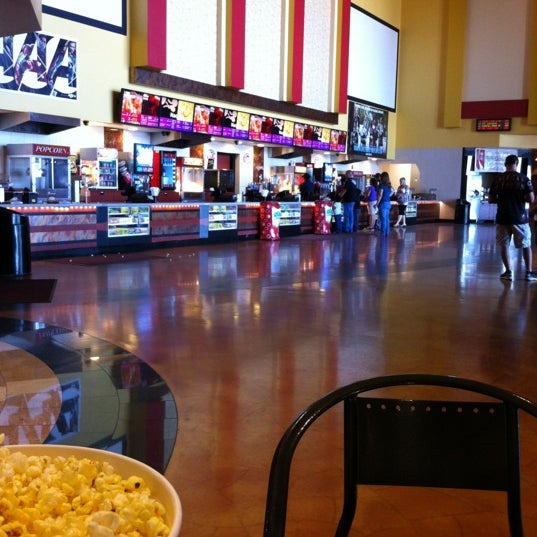

Though Maya offers cushy amenities such as reclining seats and large-format screens, the company eschews increasingly trendy luxury perks, such as in-seat dining. Regular adult tickets at Delano’s new theater will cost $9 each, which is less than the upscale cinemas in major cities such as Los Angeles, Esparza said. It seems like you can make a decent return in certain markets.” “The theaters just need to be scaled appropriately for the audience…. “It’s an interesting approach for a theater chain,” Handler said. Construction of the new Delano theater, part of a larger development by El Monte-based real estate company YK America Group, was financed by Chase Bank, he said.ĭespite the challenges, Eric Handler, an analyst at MKM Partners who follows the theater business, said Maya Cinemas could succeed by catering to a niche and keeping tickets affordable. The first construction loans for his theaters came from Far East National Bank, a Chinatown-based lender recently acquired by Cathay Bank. My projects cost $25 to $30 million each.” “I’m not doing little tiny projects,” Esparza said. That hesitation only magnified after the last recession, when commercial lending dried up. He chalks up his early struggles to the difficulty of persuading lenders to believe in him, and a longtime reluctance by financial institutions to back major developments in working-class communities. He is also working on opening a theater in Compton, but the project faces challenges, he said, because of limited land available for parking. He now estimates Maya Cinemas’ circuit will include 10 theaters within the next two years, including locations in Phoenix and Las Vegas. In a 2010 interview, he told The Times he expected to eventually open 40 locations with a total of 500 screens around the country. Maya has struggled to expand as fast as Esparza hoped after he opened his first theater in Salinas in 2005. Johnson sold his theater chain in 2004, and the Baldwin Hills theater was closed, renovated and reopened as a Rave Cinemas. Former Los Angeles Lakers star Earvin “Magic” Johnson advocated for more entertainment options in largely black communities, opening the Magic Johnson Crenshaw 15 in Baldwin Hills in the mid-1990s. “It’s a community that really goes to movies.”Įsparza is not the first person to try to build a business putting theaters in locations neglected by the major chains. “The market is underserved, and it’s the market that contributes more than any other to the bottom line of Hollywood,” Pozo said.

Santiago Pozo, founder of the Los Angeles-based, Latino-focused marketing firm Arenas Entertainment, said Esparza’s plans make sense. Now they will have a new nearby destination with 12 screens and 1,182 recliner seats. Residents have to drive for more than a half hour to go to the movies. Maya Cinemas continued its expansion on Thursday with the opening of its fifth theater - a $20-million multiplex in Delano, Calif., about 35 miles north of Bakersfield.ĭelano, with a population of about 52,700 and a rich history of farm labor activism, was attractive because it hasn’t had an operational theater in 10 years, Esparza said. His theater chain Maya Cinemas has spent more than a decade courting underserved moviegoers by opening cineplexes in working-class neighborhoods of Fresno, Bakersfield and other cities. That disparity is where the “Selena” producer and former student activist sees an opportunity. Yet, according to cinema owner Moctesuma Esparza, the film industry suffers from a persistent, vexing problem: a lack of movie screens in predominantly Latino neighborhoods. box office, boosting the ticket sales for films such as Pixar’s “Coco” and Universal’s “The Fate of the Furious.” "In her approach we have the beginnings of a virtually new artform of 'choreocinema' in which the dance and the camera collaborate on the creation of a single work of art.Latino moviegoers make up a disproportionate share of the U.S. Being a film ritual, it is achieved not in spatial terms alone, but in terms of a time created by the camera." - Maya Deren on A Study in Choreography for the Camera, 1945 With a turn of the foot, he makes neighbors of distant places. This is, in other words, a dance which can exist only on films The movement of the dancer creates a geography that never was. Moreover, he shares, with the camera, a collaborative responsibility for the movements themselves. "In this film, I have attempted to place a dancer in a limitless, cinemato-graphic space. The Very Eye Of Night 1952-55, b/w, 15'Ĭhoreography: Anthony Tudor. With Deren, Rita Christiani, Frank Westbrook, Anaïs Nin. Ritual In Transfigured Time 1945-46, silent, b/w, 16'

A Study In Choreography For The Camera 1945, silent, b/w, 2'30"


 0 kommentar(er)
0 kommentar(er)
